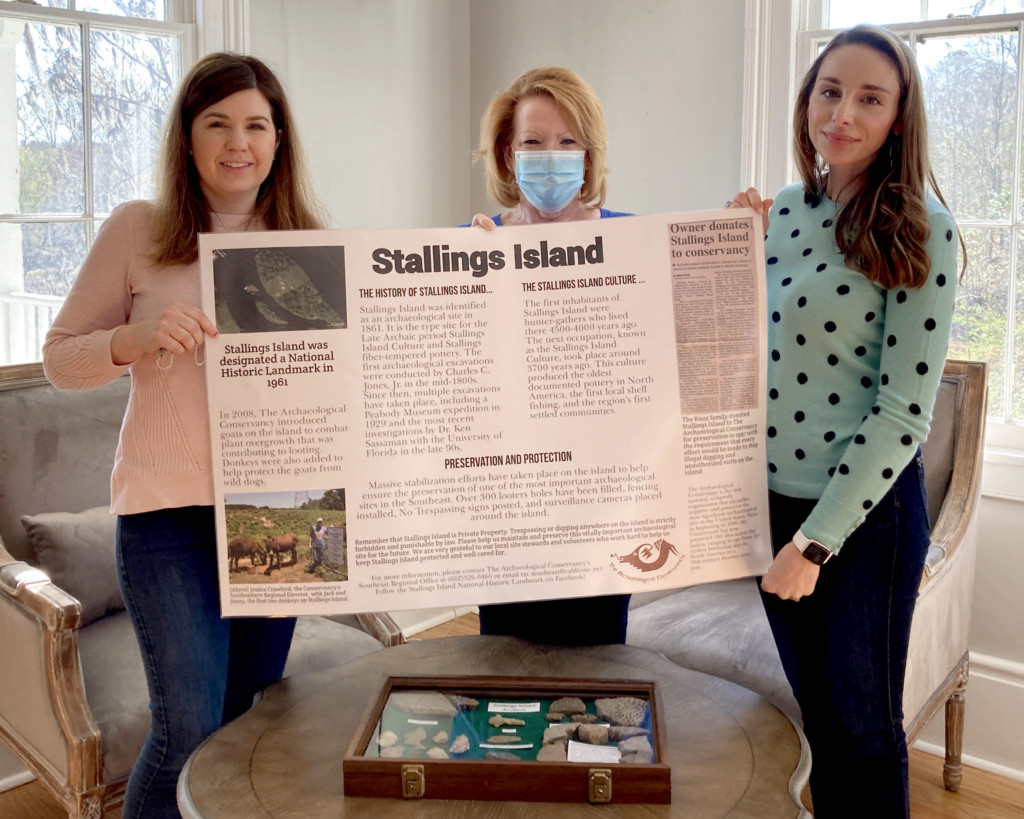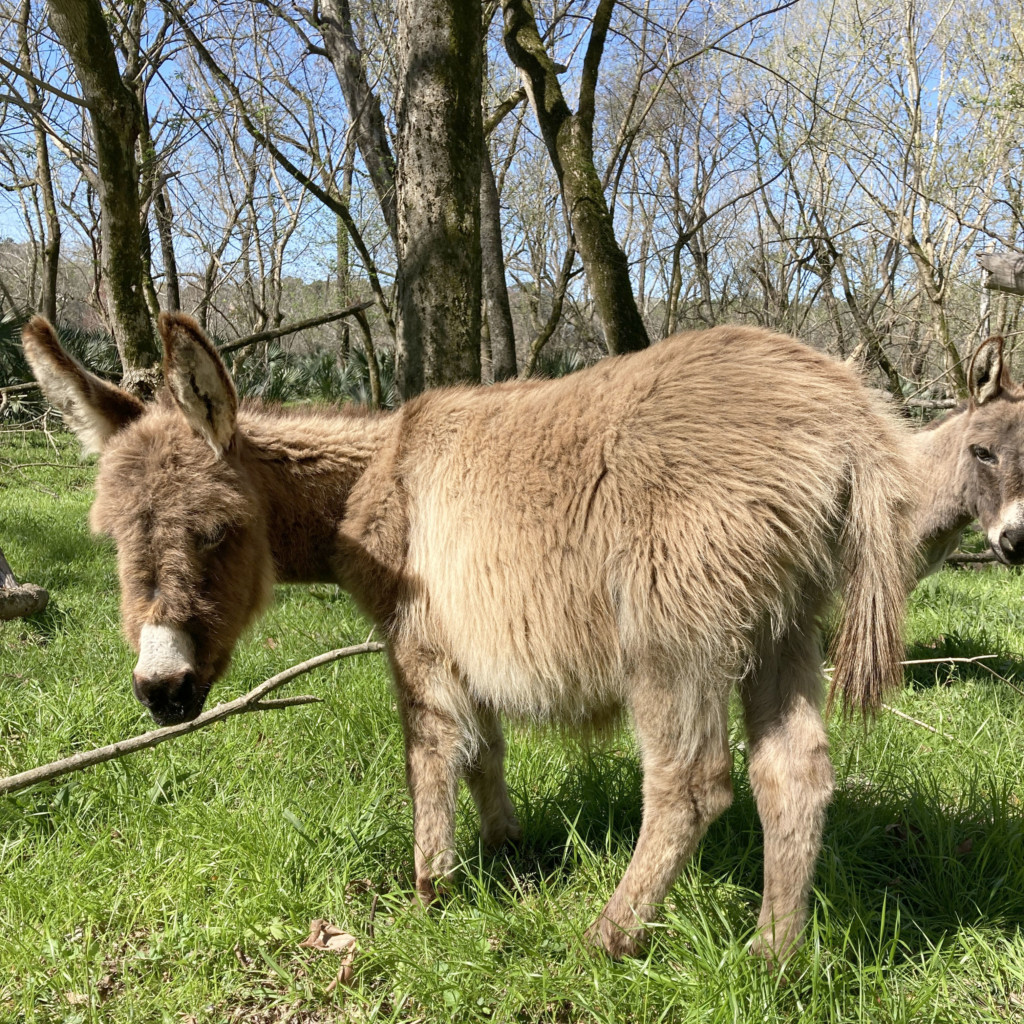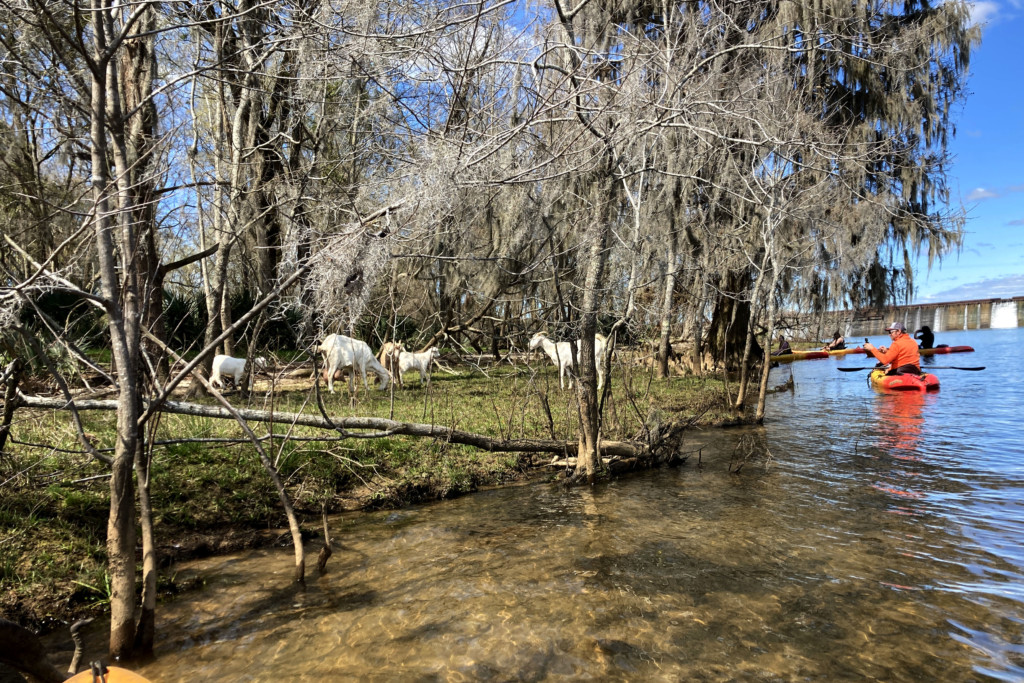Stallings Island, A National Landmark site, was donated to the Archaeological Conservancy in 1997 by Wyck and Shell Knox of Augusta, Georgia. At that time the site had undergone heavy looting resulting in a virtual moonscape of looters holes. Luckily the looting had been confined to only one area of the site. Stallings Island played a pivotal role in the cultural landscape of the Southeast during the Late Archaic period (3000-1000 B.C.). A prior occupation was also identified during University of Florida excavations in the late 1990’s. This occupation was hunter and gathers from the Piedmont region using the area for almost 500 years from about 4,500 to 4,000 years ago.
The later Stallings people seemed to be ahead of their time. Archaeologist speculate that the origins of the Stalling culture began about 5,000 years ago in the Lower Savannah River Valley. The culture produced the oldest documented pottery in North America, the first local shell fishing and the regions first settled communities. The Stalling Island site has been the source of study and conjecture by archaeologists since 1873. The most recent work was conducted by Dr. Kenneth Sassaman in 1999, Professor of Archaeology at the University of Florida, the foremost expert on Stallings Island and Stallings culture, who published in 2006 the authoritative book on the area ‘People of the Shoals: Stallings Culture of the Savannah River Valley’.
Typically, the Stalling Island people lived in semi-permanent villages along the shoals of the Savannah and Oggeechee Rivers where they could have easy access to freshwater shellfish, producing large shell middens. People at Stallings Island probably lived in round houses made from bent saplings covered with skins or bark and possibly arranged around a circular plaza. They produced the earliest forms of decorated pottery, along with carved bone pins, banner stones, and stemmed projectile points. Through the Conservancy’s preservation and protection efforts, researchers now can continue to acquire information that may explain the many mysteries that still sound the culture and its island. The Stallings Island preserve was featured in American Archaeology, Vol.1 No.3, Fall 1997
In 2020 Southeast Field Representative Nikki Mattson delivered an artifact display and educational poster about Stallings Island Preserve to the Columbia County Visitor Center. The artifact display and poster can be viewed at the visitor center inside Savannah Rapids Park in Martinez, GA, which is open Monday through Saturday from 10 am to 4 pm. She also visited Stallings Island where she conducted routine maintenance such as checking surveillance cameras and posting additional No Trespassing signs. Trespassing is a continual threat to the site as the Island is a landmark along a popular kayaking route.
-

Visitor Centers Employees with our new education poster. Photo credit: Nikki Mattson/TAC
Site maintenance at Stallings Island goes beyond the typical regular mowing, stabilization work, and installation of No Trespassing signs, surveillance cameras, and protective fencing. It has unique conditions that require more innovative solutions. In 2008 donkeys and goats were introduced on the Island to control plant overgrowth, which was difficult to maintain with traditional mowing equipment. In August of 2020, Stallings Island was the center of excitement as an aggressive male donkey was relocated from the island by a handful of volunteers and a couple of boats.

One of the Island’s gentle donkeys grazing during Nikki Mattson’s recent visit to the preserve. Photo credit: Nikki Mattson/TAC
-

Kayakers stop to take photos of the goats as they float by Stallings Island. | Photo credit: Nikki Mattson/TAC




